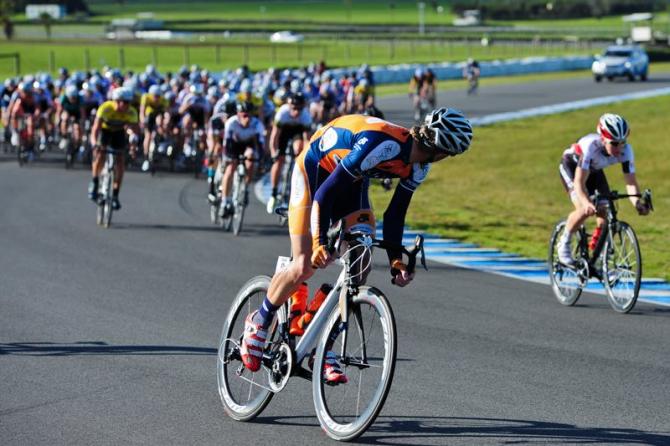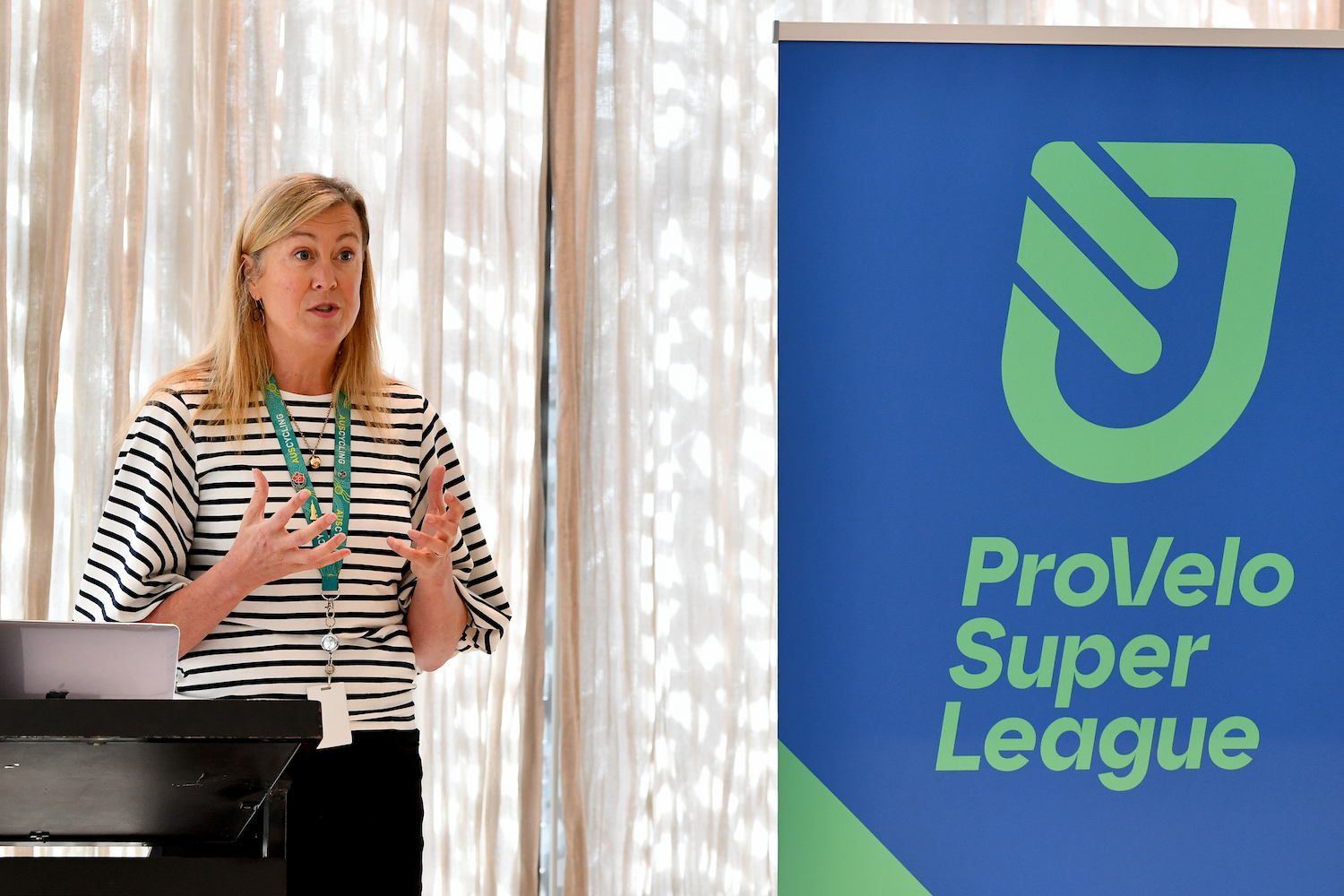There have been no shortage of cycling events and teams around the world feeling the pressure of rising costs, and Australia’s National Road series hasn’t escaped unscathed. Once powerful teams have fallen by the wayside, races have disappeared and it has become increasingly clear that the incubator for the nation’s rising talent was threatening to start running cold.
“It’s come from many, many years of, the events getting more expensive to run, less and less sponsors coming in, so the race get pushed further and further out where people can’t see them,” former professional cyclist, team owner and sports director Matt Wilson told Cyclingnews.
“Then they start charging teams more and more to come to events to try and make their money and then teams can’t afford it because sponsors don’t get the value Everything was just going in a vicious cycle, and it was only going one direction.”
That certainly wasn’t up.
The nation’s cycling federation was reviewing the options and so were those outside it that had invested so much of their life in the sport. The outcome is that the AusCycling National Road Series which has provided the top level of domestic competition in the nation for approximately three decades will no longer exist in 2025.
Something new will take its place, something that it is hoped will rejuvenate road racing in Australia – a private equity-funded ProVelo Super League.
It will turn the current model on its head in an attempt to create a sustainable series, which can help developing talent and growth within both the top and lower levels of the sport in Australia. But before we look into the new model, let us delve further into the current one and just why change is seen as necessary.
The latest race content, interviews, features, reviews and expert buying guides, direct to your inbox!
In 2024, there are 7 events on the NRS calendar with all having both men’s and women’s NRS racing and a total of just 13 days of racing for the women and 15 for the men. Back in 2013, when the series had Subaru Australia as the major sponsor – and the funds and publicity that went with it – the schedule, when announced, included 27 days of racing for the women and for the men it was 50 days.
Comparisons with the startlists published in the Cyclingnews coverage of the events of a decade ago also tell a tale of broadly stagnant women’s rider and team numbers – despite a rapid growth in the women’s sport in general – and a big decline in the men’s even though there are far fewer events to spread the riders across. The number of men’s teams listed on the end of year team rankings exceeded 20 a decade ago, with fields often over 150 riders. In contrast, at some of the events that are still running and part of the series, have numbers in 2023 that around 60 per cent of what they had been a decade ago.

“The only way things were going to change is if we got a big pool of money in and we flipped the model – we supported those events, we supported those teams and we brought the racing back to where people can watch it,” said Wilson.
“With a broadcast that was going to give value back to teams, new sponsors would come in. Then we could get that back into a good cycle, back to where it should be and, yes, we needed to unlock private equity to do that.”
Cue Gerry Ryan.
A perennial white knight
The Ryan family has time and time again stepped into Australian cycling over the decades to provide the financing that has so sorely been needed to make sure the opportunities and development pathways are open. Right back from 1992, when the successful businessman contributed to Kathy Watt’s campaign toward the Olympic Games, where she won gold and silver, a countless number of Australian cyclists have benefitted in one way or another from Ryan’s investment in the sport. That’s why it probably should not be a surprise to discover that when Wilson and co-founder Aaron Flanagan put together their plans and presentations for the ProVelo Super League, Ryan was the first person they went to see.
“He agreed straight away,” said Wilson.
Funding of an undisclosed amount was now in place, with the owner of Australia’s only WorldTour and Women’s WorldTour teams also set to become the key to the top domestic cycling competition. But there was also another piece of the puzzle that needed to be slotted into place. What of the national federation that had taken stewardship of the series around three decades ago? Would they happily pass the mantle?
AusCycling – formed from an amalgamation of the various, up until then disparate, cycling discipline federations less than three years ago – was already in the process of conducting a review of its events portfolio.
“I think we have a responsibility to really think differently about how we grow the game and grow the sport,” AusCycling CEO Marne Fechner told Cyclingnews after the launch of the new league in the bayside Melbourne suburb of St Kilda. “We know that, like many Olympic sports, we are challenged in terms of our commercial growth. Our national team, is in the spotlight once every four years.
“One of the elements that we looked at was the portfolio of events. Why do they exist? Are we doing them just because we’ve always done them? How do we evolve them? How do we how do we structure them in a way that will give them every possible chance to grow the commercial value of the products, put them in front of more people – whether that be fans at the event or whether that be through broadcast – and how do we evolve the events to ensure that they’re actually meeting the needs of the athletes development at the right time?”
The ProVelo proposal clearly provided answers, as it was a plan, said Fechner, that “wasn’t unaligned with what our thoughts were”.
AusCycling was on board.

What is the ProVelo Super League and where is it heading?
The ProVelo Super League may be replacing the previously AusCycling overseen NRS but it is far from a carbon copy, even if some key races which have stood the test of time will remain part of it. The Melbourne to Warrnambool, Grafton to Inverell and Tour of Tasmania are expected to be included, and new events in capital cities will be added to take the racing back to a place where it is accessible for more fans to watch roadside.
The racing, which will range from junior to elite categories, is expected to start early in 2025 with five tours and two classic one-day races. It will not be spread throughout the year but will instead be concentrated in a compact 10-12 week calendar that aligns with and carries on from the peak Australian summer season.
All events will be broadcast, at least in part, with delivering a schedule and package that engages a growing fan base clearly a high priority. Organisers are also planning for the elite men’s and women’s divisions to have a minimum of 25 teams, a significant scale shift on the current scenario where team numbers at NRS events in 2023 fell as low as five in the women’s category at one event and seven in the men’s.
“We need to bring new people into the sport and new sponsors into the sport,” said Wilson. “It is essential and a core part of my next two months is to going to be to go out there and try and create momentum and get people excited about this concept and get the sponsors saying, ‘Oh, this is not what it was. This is something new. This is going to provide value’. We want new sponsors to come out and use this as a conduit into cycling.”
There are a core of committed sponsors that have invested in teams and races but, at this point at least, it appears most are driven by passion rather than attracted by the market opportunity. The new league hopes to not only make cycling an appealing proposition on both levels, but also streamline the commercial pathway into the sport.
“If there are people out there that want to get involved in cycling but they don’t know how and think this looks good – contact us,” said Wilson. “We can put them in touch with people that we believe can run a great team. We’ve got networks of riders and coaches and staff that could put together a team and there are also existing teams that out there that are struggling financially, we can put sponsors in touch with them.
“We’re going to invest a lot of money into broadcast, a lot of money into trying to drive audiences and pick up content of the riders, build that into the broadcast, learn about the stories of the riders, showcase rivalries, create heroes and villains, and really try and broadcast it in a different way that’s exciting to watch. I think that will excite sponsors – that will actually derive some return on their investment.”
All in all, even though the beginning targets for the ProVelo Super League are ambitious, there is more to the vision of what it could become in the longer term.
When asked what the ultimate hope was and what the ProVelo Super League wanted to achieve Wilson started with “having events that are financially sustainable, having teams that have financial security”.
Then if all goes well, that could open up a whole new realm of opportunities for riders in Australia and also in the regions beyond.
“I can see that in a few short years that there could be potential for riders to get paid in this league because the team wants to attract a rider that’s going to win races and there’s good coverage so they’re willing to pay them a little bit of money,” said Wilson. “That hasn’t been the situation in Australia forever and I don’t think that’s very far fetched if we do a good job … That’s ultimately where we want to get to.
“There are also plans to expand into WA and do an event over there to make it truly Australian and plans to go more Asia-Pacific focused, attracting Asian teams, attracting teams from New Zealand, potentially doing an event over there at some point. But this is big picture. We have to get this right first and see where it goes from there.”

